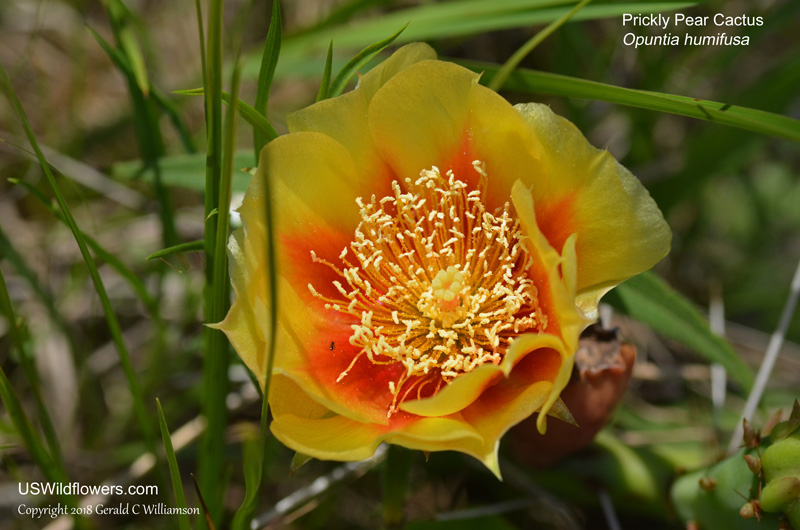Eastern Prickly Pear Cactus – Native Plant of the Day 07/23/2023
Photo from 06/05/2018. Location: Flat Rock Cedar Glade, Rutherford County, TN.
More photos / info at the Eastern Prickly Pear Cactus detail page, including an explanation of why this is likely O. cespitosa rather than O. humifusa.
Also NPOD 07/23/2019, 07/23/2020, 07/23/2021, 07/23/2022


Hello!
I live in New Jersey and love cactus. There are now two (possibly three) species of Opuntia in this state, after O. humifusa was divided into additional species.
Opuntia humifusa has pure yellow flowers and no spines. It is common along the Jersey shore.
Opuntia cespitosa has yellow flowers with orangey-red centers, and has definite spines often over one-inch long. These plants are found on rocky cliffs and mountaintops in Hunterton County and Northern NJ.
O. cespitosa plants appear to be scarce in NJ, and possibly belong on the state’s threatened or endangered species lists.
I am not a botanist, but I’ve loved these prickly pears since I was a kid!
Thank you for your time and understanding!
Thanks for your commentary, and I have now (as I should have before) put commentary on this page that the species shown is likely O. cespitosa, and to go to the linked detail page for more information on that. I really appreciate as well your NJ distribution notes.
I live in Berkeley Township NJ and prickly pear grows like a weed around here. I have some cultivated Opuntia humifusa that I brought with me from my garden up north. The spines are not visible. The wild Prickly Pear (Opuntia humifusa) has more visible spines than mine and one variety I’ve seen does have the inch-long spines that suggest it’s Opuntia cespitosa. Now that I know this is a separate species that’s less common and possibly endangered, I will collect pads from different locations (I see them growing in easements and at the edge of lawns near the sidewalk) and cultivate them on my property to ensure they don’t get completely landscaped away. The plants stay small around here because the pads get chomped by wildlife and lawn mowers. However, they still bloom even from the smallest pads.